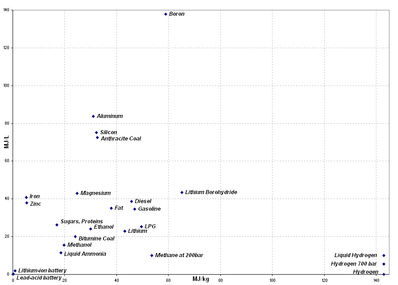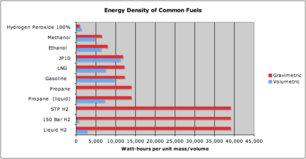Much of the transportation talk these days revolves around finding more efficient ways to fuel our vehicles, for obvious reasons. Eventually, fossil fuels will run out, and we need to have an alternative in place long before we reach that point. As Italian air marshal Giulio Douhet was quoted as saying back in 1928, “Victory shines upon those who anticipate the changes in the character of war, not upon those who wait to adapt themselves after the changes occur.” Strangely enough, though, the sustainability conversation as concerns commercial aviation hasn’t risen to the same level of visibility as it has concerning automobiles, even though the impact on the airline industry . Some discussion has occurred concerning the viability of transforming aviation into a much greener form through the use of biofuels and some prototypes (at both the general and commercial aviation levels) have flown, but much remains to be both seen and done in this regard. Doubtless, the dramatic increase in fuel costs over the past few years has been a prime motivator in the escalation of (aviation) fuel efficiency and sustainability from a behind-the-back-burner issue to a major priority.
When looking at the issue of alternative fuels and aviation, a number of key concerns dominate the discussion: energy density (from both the volumetric and gravimetric standpoints), storage technology/requirements, production/transportation infrastructure, and availability. I’ve not listed environmental concerns here primarily because a fuel must still address these issues in order to be practical, no matter how eco-friendly it might be.
Energy Density: Energy is the driver for everything that we do, from moving our bodies to going into space; without a doubt, it is the central enabling factor for our modern technological society. Raw energy isn’t the only factor worth considering, though. Just as critical is the amount of space a given amount of energy takes up (its volumetric energy density) and how much it masses (its gravimetric energy density). An ideal energy source would both produce a lot of energy and take up as little space- or weigh as little- as possible. Figure 1 is a scatter plot showing the gravimetric and volumetric energy densities of 24 different fuels. One glance at the chart shows that there are no common fuels that are extremely efficient in terms of both characteristics. Hydrogen is an ideal fuel from a mass standpoint, but the volume of space it takes up makes it impractical in many cases. In contrast, gasoline is a middle-of-the-road performer with moderate scores in both categories.
For some applications, volume is more important than mass (or vice versa); in aviation, both weight and volume are critical concerns, so a fuel that balances both energy densities is a better compromise. Those energy densities in turn affect the range, payload capability, maximum speed, and other performance characteristics. Figure 2 demonstrates that, even though hydrogen may mass little, other fuels strike far better of a mass/volume balance.
Storage requirements: To be of any use, a fuel has to be carried- if the transportation requirements of a fuel are too onerous, then the fuel will not be practical, regardless of how high an energy density it might have. Hydrogen is a good case in point. The reason that so much hydrogen storage R&D is currently being carried out is because of the volume that hydrogen takes up in all its forms; though it has an extremely low mass, its density is so low that its volume requirements are prohibitive (for instance, gasoline’s energy density is three times higher per unit volume than liquid hydrogen, and it doesn’t need to be insulated). [ad name="Adsense Small Horz Banner"] Technology & Infrastructure: Though most people don’t think about it often, infrastructure is the foundation of all industry- if you can’t transport resources, communicate efficiently, or receive electrical power, you can’t function adequately in modern society. Changing over to new fuels is sometimes easy, as in the case of ethanol and biodiesel use in automobiles; these alterations can still benefit from existing technologies and networks. Hydrogen requires unique production, storage, and transportation networks, while aviation biofuels have to be refined from more conventional biofuels. Supporting the latter technologies represents a much more sizable initial investment, though the potential long term rewards of lower fuel costs, lower environmental impact, job growth, and greater energy security are arguably more than worth the investment.
Availability: Of critical concern for aviation is the issue of availability. Not only must a fuel meet the technical requirements and be practical from a technological and infrastructure standpoint; it also has to be available in the volumes necessary to keep the avaiation industry running smoothly. Figure 3 shows U.S. aviation kerosene (jet fuel) deliveries in thousands of gallons per day. For the past decade, average usage has been about 40 million gallons/day, a number no alternative fuel is positioned to match in the immediate future.
Given all these factors, what are the most promising candidates?
• Metal-Organic Frameworks: Related to buckyballs, these compounds take advantage of an extremely large surface area to bind hydrogen. Recently, a joint research effort between the University of Maryland, CalTech, and NIST demonstrated a storage concept that promises to allow storage at densities better than solid hydrogen and at temperatures as high as that of liquid hydrogen. If successful, these compounds would rectify the most serious disadvantages • Biofuels: Numerous research teams are reporting success in using biofuels as a base to create jet fuel; some of the most successful so far involve jatropha (a weed that grows in the tropics) and soy methyl esters. So far, the largest hurdles to be cleared surround the poor low-temperature performance of these fuels. Still, even if only an additive to traditional jet fuel, they would provide some sorely needed price relief for the industry.



